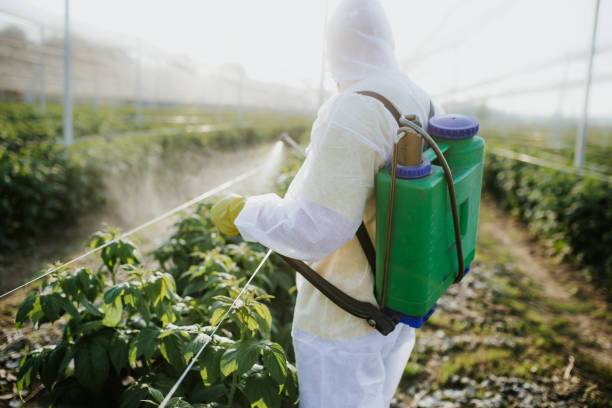by Haoxin Safety
Share
by Haoxin Safety
Share

Agriculture is one of the industries that use disposable coveralls. These are commonly used in greenhouses, nurseries, and orchards as a means of protecting workers from harmful bugs and chemicals while they work. The disposable coverall is also used by farmers to protect their crops from pests, particularly in the summer months when the bugs are more active. Disposable coveralls provide the right level of protection against wildlife and bugs, meeting your needs while keeping your costs low. They are also able to be recycled once you’re done with them so there’s no need to buy new ones after every season.
Disposable Coverall Types
Disposable coveralls come in various styles and types, depending on your specific needs. Some coveralls are made of nylon or polyester, while others contain a blend of both materials. Cotton coveralls are commonly used for farm clothing and are naturally breathable and comfortable to wear. Polyester coveralls are lightweight and durable, making them good choices for outdoor use. They are also easy to clean because they remain white and don’t stain easily. Nylon coveralls are another popular choice for agriculture. They’re lightweight, durable, and very inexpensive. They’re easy to clean, too.
Light Weight Coveralls
Lightweight coveralls are designed to be worn in cooler climates where lightweight fabrics are more appropriate than heavier fabrics. These coveralls are usually made of polyester and come in a variety of colors to match your production environment. Polyester is a very strong and durable material, which is why it’s used for lightweight coveralls. These coveralls are easy to wash, and dry, and don’t wrinkle easily. However, polyester is a very lightweight fabric, which means it’s not suitable for wearing in inclement weather.
Double Layered Coveralls
Double-layered coveralls combine two different types of fabric to create a durable and breathable coverall. The inner layer is commonly made of nylon or polyester, while the outer layer is made of cotton and is sewn to the inside layer for extra durability. Double-layered coveralls are a great choice for colder climates because they provide good warmth while still being easy to wash and dry. Double-layered coveralls are a good choice for anyone who works in a hot environment, like a greenhouse. They’re also a great choice for farmers who need to protect themselves from the seasonal hazards of bugs, like mosquitoes and black flies.
Breathable Coveralls
Breathable coveralls are made of a blend of 65% polyester and 35% cotton. The cotton provides breathability while the polyester fabric makes the coverall durable and resistant to tearing. This blend of fabrics means that breathable coveralls are lightweight, durable, and easy to wash. They’re a great choice for cooler climates because they let moisture escape without overheating the wearer. However, they’re not as durable as heavier coveralls and can be easily torn or pierced. Breathable coveralls are a great choice for anyone who works in a hot environment, like a greenhouse. They’re also a great choice for farmers who need to protect themselves from the seasonal hazards of bugs, like mosquitoes and black flies.
How to Get the Most out of Your Disposable Coveralls?
– Wash your coveralls with similar colors so they don’t become dingy or stained. You can toss them in the washing machine or soak them in the tub.
– Dry your coveralls on low heat to prevent them from shrinking or damaging.
– Store your coveralls in a dark, dry, and preferably rodent-proof place to preserve their shape and wrinkle-free appearance.
– If needed, re-sew tears or worn-out areas with a needle and thread.
Conclusion
Disposable coveralls are an excellent way to protect yourself from harmful wildlife and seasonal hazards while you work. They come in a variety of styles and types, so you can find the right coverall for your needs. We’ve provided you with a brief overview of these coveralls, as well as some tips on how to get the most out of them.
